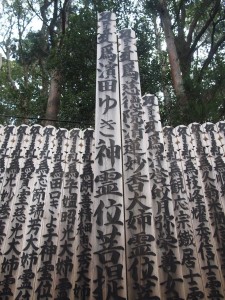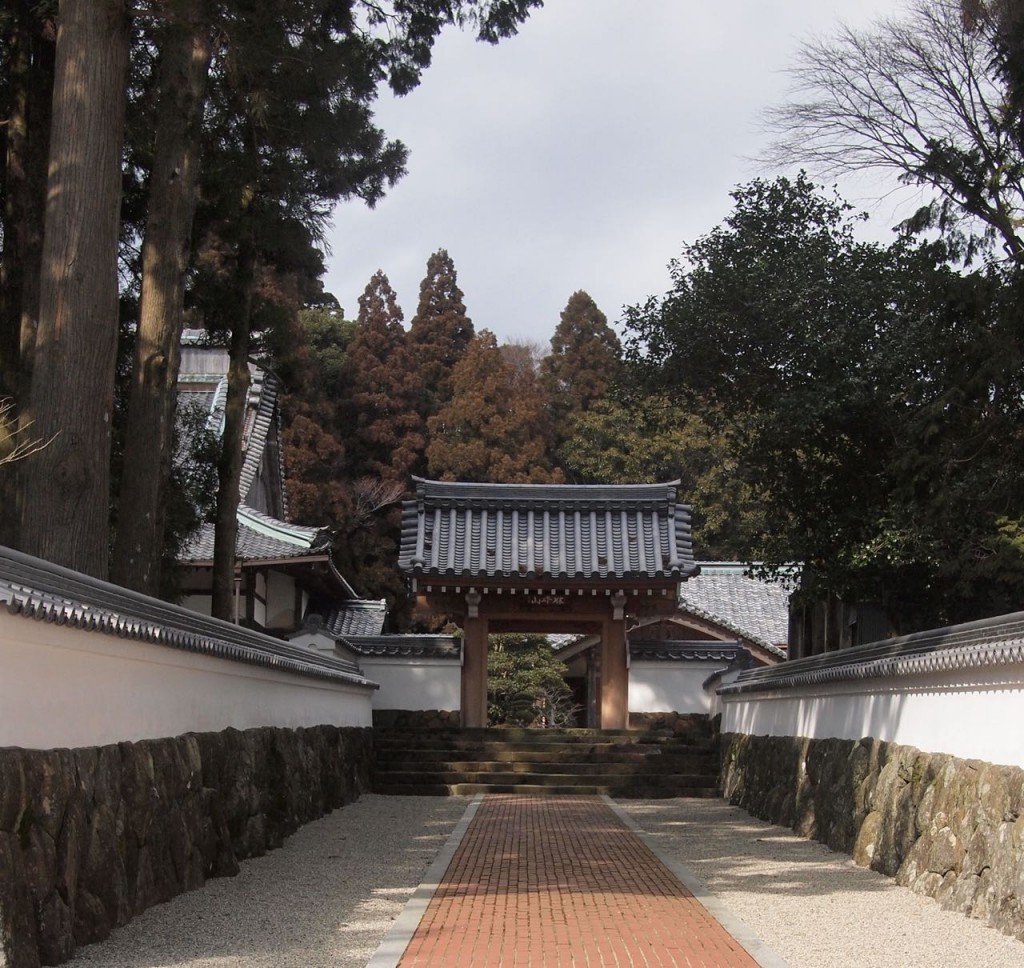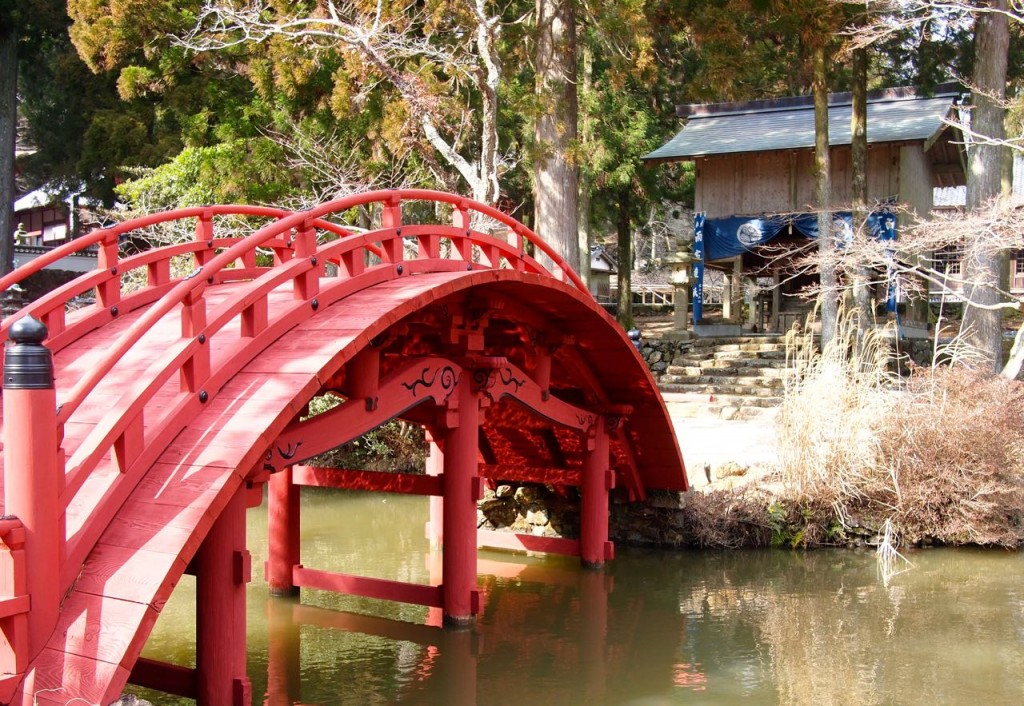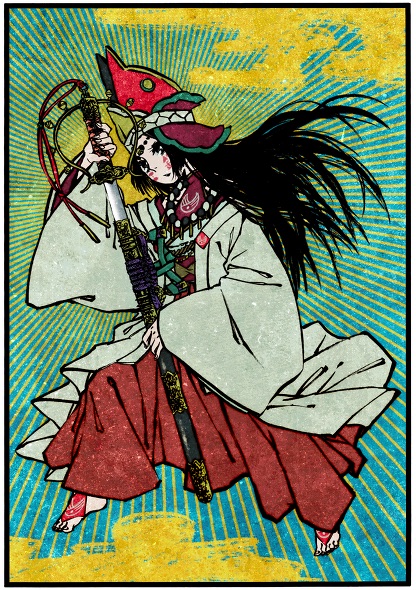Learning about Ise at Kogakkan: Day 5
Today, Ise Jingū is known exclusively for being a place of Shinto pilgrimage. But up until the Meiji separation of shrines and temples, there was a place you could walk to from the Naikū for another kind of pilgrimage. I once tried to walk from the Naikū across the mountains and found it a rather intense experience. I wish I had known that if I had taken a different direction, there would have been a Buddhist temple complex called Asamayama waiting for me at the end of the trail.
The bus ride to Asamayama took us on a narrow, bumpy road up a steep mountain for about half an hour. As we reached the top there was nothing but wilderness visible in every direction. Our first stop was the treasure house, which had the word CLOSED 閉館 painted on it in large letters using tape. The head priest unlocked the doors and showed us inside; there were some 1000-year-old national treasures, which properly belonged on the altars of the various buildings, kept in the treasure house due to the recent spree of robberies by Korean nationalists. There were also various medieval curios, such as an old set of weights and a artfully carved statue of some warrior Buddha wearing elephant heads for his trousers.
As I was taking the above picture of the entrance, the head priest pointed the other way, down a very old-looking stone path, clearly of prewar construction. There was a weathered sign reading “Old Pilgrimage Road” towards its start. “This goes all the way to the Naikū,” he said. I wanted to run down and take a picture of where it went, but we were hurrying along to the main Buddha hall. Pictured: a bridge we weren’t allowed to cross.
Asamayama possibly dates back to the 6th century A.D., making it almost as old as the Jingū itself. Here, the aristocrats could go into seclusion as monks and nuns; in the early 20th century a metal canister was discovered with a sutra in it, written by a nun in honor of her dead husband, a chief priest at the Gekū. At this temple, Shinto and Buddhism are mixed freely. A sakaki tree stands in the main Buddha hall, and behind the enshrined Buddha there is a hidden altar to Amaterasu. Formerly, Amaterasu herself was honored in one of the temple buildings, using a statue of her 16-year-old self, called Uhou-Douji 雨宝童子 or “Rain Treasure Child,” and supposedly carved by the genius philosopher Kūkai. This statue is now kept in the treasure house. I would like to know why the sun goddess was given the name “rain treasure,” and why the specific age of the figure portrayed was so important. (Update: Mystery solved) Here is a completely unrelated picture.
Away from the main Buddha hall, in a secluded part of the mountain, is another building where the monks presumably live. Connecting the main buildings with these side buildings is a path covered in many rows of calligraphy painted onto wooden poles, called sotoba 卒塔婆. This word is quite simply the Sanskrit stūpa स्तूप imported into Japanese through Chinese. The stupas are left to honor the spirits of the dead and help them achieve Buddhahood. The bigger the pole, the more expensive. Many of these poles are the result of a monthly offering by Ise’s fishermen to calm the souls of the fish they catch (below, left). But the largest one of all, a special offering (below, right), was for the soul of the grandmother of the owner of Akafuku, who made the sweet rice cakes we ate outside the Naikū. We have also learned on this trip that Akafuku’s owner has promised over $1 million to build a soccer stadium at Ise. I never knew that rice cakes could be such big business.


To close out the week, the program director invited us to an all-you-can-drink party at a craft brewery in town. I would love to say more about this but I’m afraid I don’t remember it too well. Anyway, I had never heard about this place on previous trips to Ise, but in fact in the Edo period many pilgrims to Ise would go here as well, due to the temple being 1000 years old and directly connected with Amaterasu. The slogan for the temple was, “If you don’t go to Asamayama, it’s only a partway pilgrimage!”
Posted: February 27th, 2015 | Kogakkan



